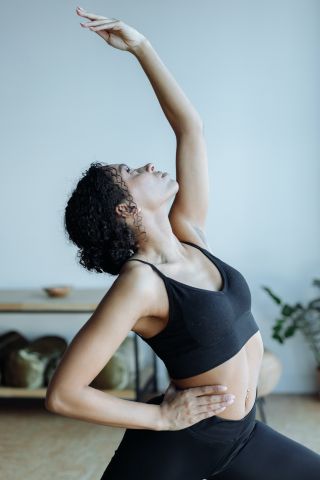Depression
Yoga Could Help Relieve Depression, Study Suggests
New evidence that yoga may be useful in treating mild-to-moderate depression
Updated October 27, 2023

Over the past decade, there has been a rapid growth of investigation into the role of yoga in the treatment of depression. Between 2005 to 2015, 24 randomized control trials investigated yoga as a means to help treat depression—close to five times the number of studies in this area before 2005. Studies of yoga and depression have mostly been limited by small sample sizes and have focused on specific groups, such as pregnant women or older adults, making results more difficult to generalize. Yoga has up until now primarily been studied in combination with traditional treatments for depression, including medication and psychotherapy.
In this new study, researchers intentionally focused on people who were not already participating in other forms of treatment for depression, such as medication, talk therapy, or herbal remedies. In the experimental condition, a certified yoga teacher taught hatha yoga sessions. Hatha yoga is a general term for yoga that includes poses, breathing and deep relaxation techniques (and sometimes refers to a more specific style that offers a gentle, slow pace of poses). The yoga group did poses and breathing techniques twice weekly while the control group learned about yoga history and philosophy in an educational course.
Yoga sessions in the study lasted for 90 minutes and were broken down into a 5-minute introduction, 20 minutes of yoga breathing exercises, 50 minutes of poses and movement, and 15 minutes of final deep relaxation. In contrast to the majority of other yoga studies, researchers reported the detailed yoga sequence and exercises, which is particularly useful.
The yoga session for depression included:
1. Yoga breathing (Pranayama) (20 minutes):
- Victorious Breath (Ujjayi): a deep slow breathing through a gently constricted back of the throat)
- Bellows Breath (Bhastrika): a rapid forceful breath
- Alternate Nostril Breathing (Nadi Shodhana): relaxed breathing alternating between nostrils
- Bee Breath (Brahmari): a calming, slow humming breath
2. Yoga poses (50 minutes) specifically focused on chest-opening poses, which are thought to help relieve depression. These include Cobra Pose, Bow Pose, Fish Pose, Bridge Pose, Camel Pose, and Child's Pose.
3. The final resting pose was Corpse Pose (15 minutes)—lying down on the ground supine.
It is still an open question how long or frequent yoga sessions need to be in order to improve depression. Previous studies have found that yoga can help in as little as four weeks, particularly when it's done each day. Even with this study, it is too early to know whether yoga alone could be used to treat milder forms of depression. But yoga, including yoga breathing and meditation practices, is an important resource to consider in the treatment of depression on a case-by-case basis.
Try Bee (Brahmari) Breath
Bee Breath helps relieve anxiety and tension and only takes a few minutes.
- Sit comfortably with your spine tall and shoulders relaxed.
- Start with a few natural breaths.
- Inhale through your nose with your lips sealed.
- Exhale to make a gentle humming sound (like the letter “M”). You will feel a gentle vibration in your throat, nose, mouth, and lips.
- Focus on the exhalation, letting it be slow and relaxed. You don’t need to force the breath and inhale when you feel comfortable.
- Repeat for 4-5 more breaths. Notice if you feel any different than when you started.
For more yoga exercises, our book The Harvard Medical School Guide to Yoga covers dozens of yoga poses, breathing exercises, and meditations.
References
Prathikanti S, Rivera R, Cochran A, Tungol JG, Fayazmanesh N, & Weinmann E. (2017). Treating major depression with yoga: A prospective, randomized, controlled pilot trial. PLoS One. 2017 Mar 16;12(3):e0173869. doi: 10.1371/journal.pone.0173869.


